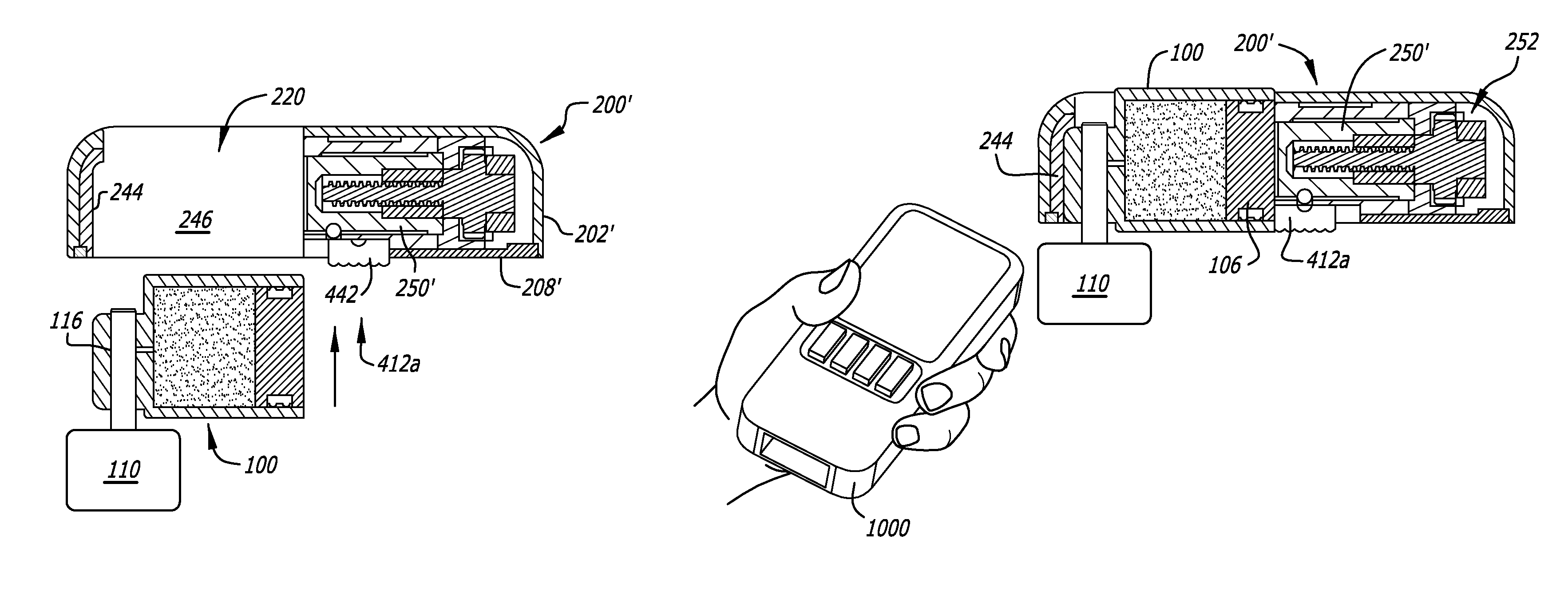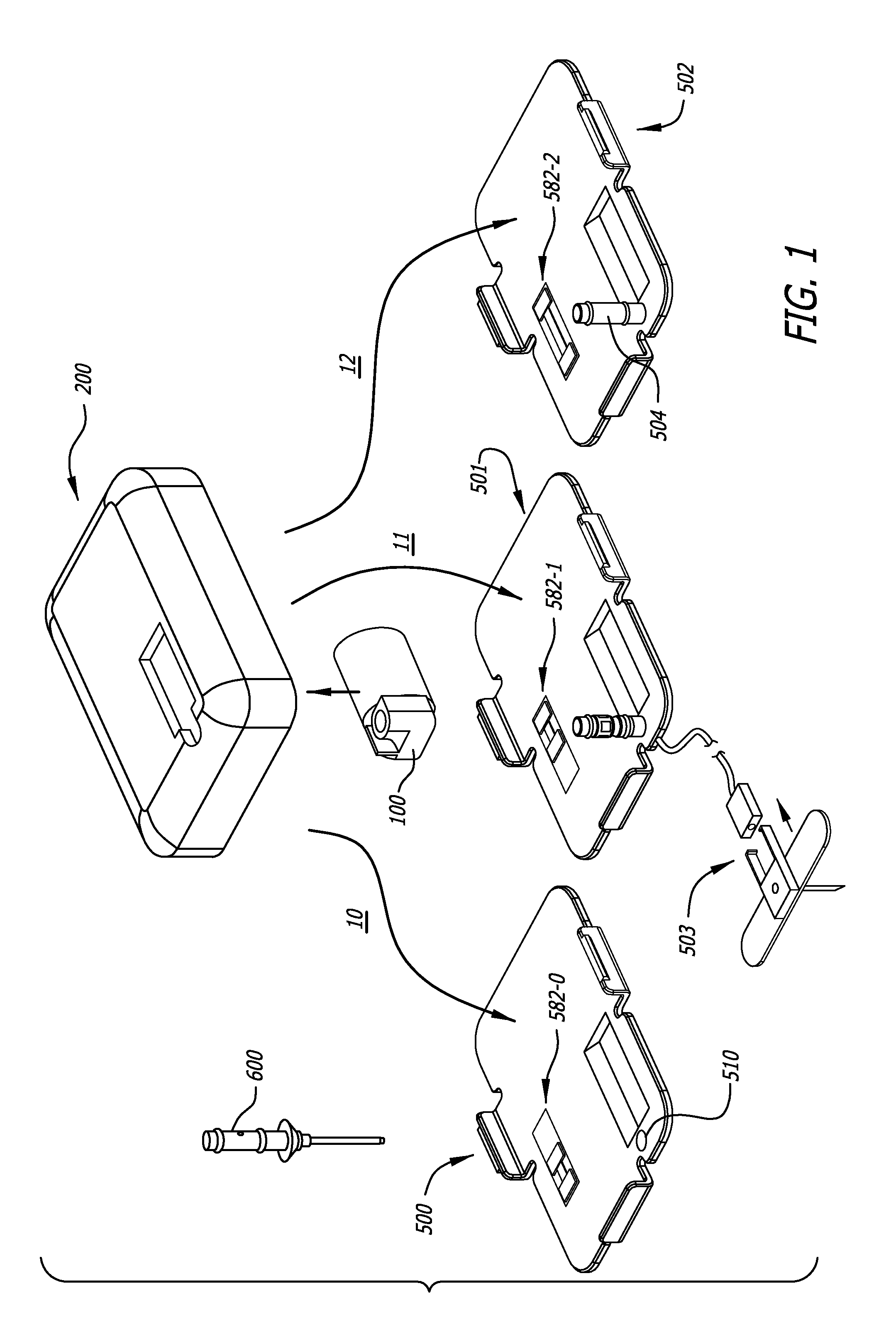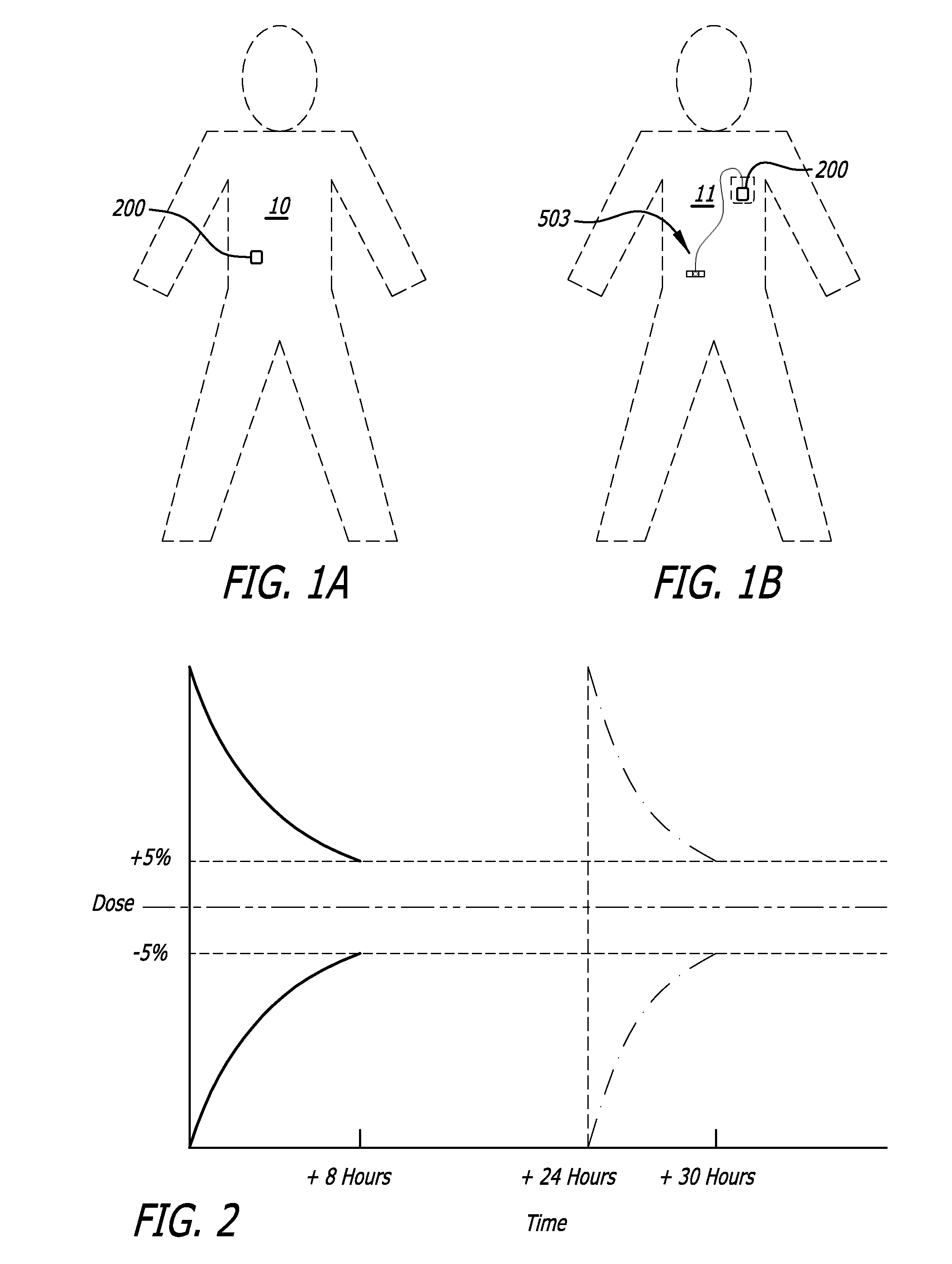Infusion pumps
a technology of infusion pump and pump body, which is applied in the direction of pressure infusion, other medical devices, medical preparations, etc., can solve the problems of reducing convenience, adversely affecting the patient's medicament delivery regimen, and inability to achieve this level of accuracy
- Summary
- Abstract
- Description
- Claims
- Application Information
AI Technical Summary
Benefits of technology
Problems solved by technology
Method used
Image
Examples
Embodiment Construction
[0183]The following is a detailed description of the best presently known modes of carrying out the inventions. This description is not to be taken in a limiting sense, but is made merely for the purpose of illustrating the general principles of the inventions.
[0184]The detailed description of the exemplary embodiments is organized as follows:[0185]I. Introduction[0186]II. Exemplary System Overview[0187]III. Exemplary Medicament Cartridges[0188]IV. Exemplary Pump Assemblies[0189]A. Exemplary Housings[0190]B. Exemplary Pump Modules Overview[0191]C. Exemplary Chassis[0192]D. Exemplary Plunger Pushers and Drive Mechanisms[0193]E. Exemplary Reservoir Clamping[0194]F. Exemplary Cartridge Lock and Bias Apparatus[0195]G. Exemplary Encoders[0196]H. Exemplary Pressure / Occlusion Sensors[0197]I. Exemplary Fall-Off Detectors[0198]J. Exemplary Batteries and Battery Rechargers[0199]K. Exemplary Alarms[0200]L. Exemplary System Controllers[0201]M. Exemplary Motor Control[0202]V. Exemplary Baseplate...
PUM
 Login to View More
Login to View More Abstract
Description
Claims
Application Information
 Login to View More
Login to View More - R&D
- Intellectual Property
- Life Sciences
- Materials
- Tech Scout
- Unparalleled Data Quality
- Higher Quality Content
- 60% Fewer Hallucinations
Browse by: Latest US Patents, China's latest patents, Technical Efficacy Thesaurus, Application Domain, Technology Topic, Popular Technical Reports.
© 2025 PatSnap. All rights reserved.Legal|Privacy policy|Modern Slavery Act Transparency Statement|Sitemap|About US| Contact US: help@patsnap.com



